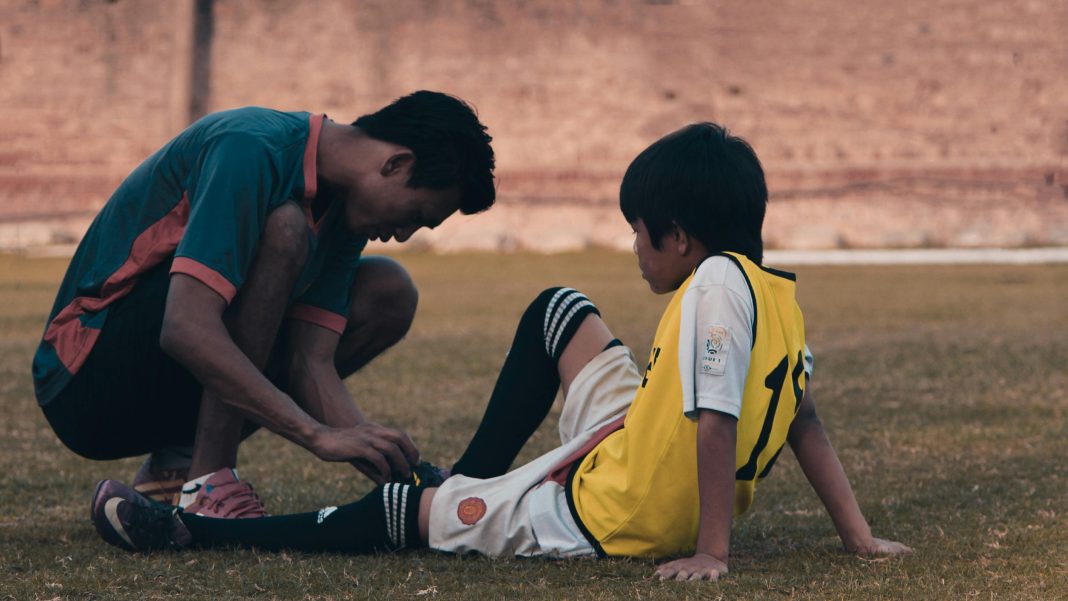When your children decide to participate in sports, it’s your job as a parent to teach them about the safety considerations that go along with being an athlete. It’s fun and character-building to join athletic teams while you’re growing up, and it should be encouraged. Without putting pressure on kids to compete in sports, you can encourage them to participate fully while being aware of their limitations and preventing injury. Learn how to promote safety in your budding athletes and ensure a more enjoyable sports experience for everyone involved.
The importance of youth sports safety
Regardless of the sport, young athletes have a unique position where they are more prone to injury. Even though they are shaping their possible future in a particular sport, they are also still growing and changing. From growing bones with weaker growth plates to evolving hormones that can cause sports disputes, children and young adults are more susceptible to injury. Although young people typically heal faster, it’s still crucial to prevent lasting injury in young athletes. Find out how to do so effectively as a parent with the following tips and tricks.
Basic sports safety practices for young athletes
Certain fundamental safety practices are applicable regardless of sport. Start by teaching children these basics, including:
- Proper warm-up to prep muscles and joints for physical activity;
- Proper cool-down to gradually lower heart rate and prevent muscle soreness;
- Appropriate protective gear like helmets, pads, mouthguards, and footwear;
- Adequate hydration to keep young athletes performing at their best and preventing injury by cushioning joints, protecting sensitive tissues like spinal cords, and staving off heat stroke;
- Proper nutrition to boost metabolism and performance while preventing injury;
- Avoidance of “overdoing it,” preventing overuse of muscles to prevent strain on growing bodies.
Young athletes may feel immense pressure from peers, instructors, or their internal dialogues to push themselves in their chosen sport. However, overextending themselves can have detrimental effects, such as straining muscles and causing accidents from exhaustion that lead to further injury. Emphasize to your young athletes that it’s actually more advantageous to take proper breaks, and let them know that this will help prevent them from being hurt and give them an advantage on the field or court.
First aid in youth sports
First aid for children in sports is also paramount. They can not only help themselves if injured during practice or gameplay, but they can also then be of assistance to others who may become hurt. Teach your children how to ask for help in sports situations, like alerting a coach or calling 911 if necessary. Run through some common scenarios, like breaking a bone or getting hit in the head, and roleplay what they should do in each instance.
Teach them to look for signs of excessive bleeding and how to make a tourniquet out of cloth. If it’s just a little bit of bleeding, let them know that they can apply bandages to the wound. It’s also possible that another young athlete can choke or get the breath knocked out of them during sports. Let your kids know that while this is a rare occurrence, it’s best to be prepared. CPR is an invaluable resource on and off the field or court, and your kid could be the reason another young athlete survives.
You can also teach them how to recognize signs of dehydration, heat exhaustion, or concussion in themselves and others. Equipping them with this knowledge can give them peace of mind during sports accidents and injuries. Prepare them adequately to stay calm in any sports emergency to prevent panic and assess the situation effectively. This is a valuable skill that they can take with them beyond the sports arena.
Proper sportsmanship
Young athletes are learning the ropes of social interactions, and sports are typically quite social activities. Whether they are playing collaborative team sports like football or more independent sports like gymnastics, they will still encounter social situations. They will interact with coaches, other parents, peers, and other competing teams. Beyond teaching them the precise rules and regulations for their chosen sport, you can tell them about the more unspoken rules of sportsmanship. Tell them about:
- Winning without excessive celebration and why that’s important.
- Losing gracefully, accepting defeat without taking it out on themselves, teammates, or opposing team members.
- Learning from mistakes to grow and improve for the next game.
- Following the rules for fair play, such as avoiding cheating and why that undermines the spirit of sportsmanship.
- Showing respect for everyone involved, including coaches, officials, teammates, and opponents.
Practicing proper sportsmanship is key for character development and keeping heated situations from escalating. Remember that kids are watching you for guidance and modeling your behaviors, so practice good sportsmanship as a parent in the stands, as well. By instilling these values, you nurture not only skilled athletes but also compassionate and respectful individuals.
Fostering a culture of safety and well-being in young athletes
Beyond preventing injuries, your job as a parent of a young athlete is to nurture resilience and confidence. It’s important to embrace the youth sports journey and create environments where your children feel seen, valued, and safe. Their physical and mental well-being will affect their performance as well as how they grow and mature. Teach your young sports aficionados about the meaning they can find in not only winning games but also staying safe and practicing compassion all around.

















